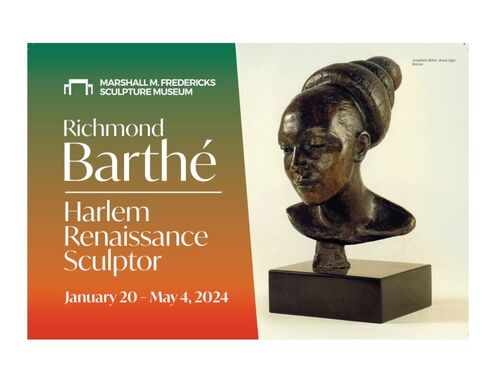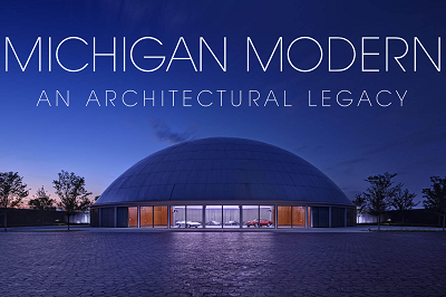Virtual Exhibitions
|
This exhibition, curated by esteemed art historian, Samella Lewis, Ph.D., in conjunction with the publication of her extensive biography Barthé, His Life in Art, provides a rare opportunity to admire over 20 of his most elegant and important crafted bronze creations that depict dancers, workers, religious figures, and icons in Black History like singer Josephine Baker and actor Paul Robeson. His masterful sculptures celebrated Black identity, portraying the beauty, dignity, and humanity of African American subjects at a time when their representation was scarce in the art world. Barthé's works challenged societal norms and stereotypes, offering a counter-narrative through his profound artistic expression. Through his art, Barthé not only captured the essence of Black life and culture but also paved the way for greater recognition and acceptance of African American artists within the broader artistic community, leaving an enduring legacy that continues to inspire.
|
|
Spanning 125 years, from 1895-2021, this exhibition celebrates some of the critical roles Anishinaabe, Inuit, and Pueblo women fulfill in their families, their communities, the art world, and beyond. Rooted in contemporary and historical artworks, this traveling exhibition explores themes like mothering, making, art world success, spirituality, and continuity in visual culture across generations.
|
|
Rose Chiu: Heart Intoxicated by Watercolor is a retrospective exhibition featuring internationally celebrated artist from Taiwan, Rose Chiu. It is a captivating 50-year exploration of not only one of the oldest forms of traditional art still made, Chinese brush art, but also an evolution of a singular artist's creative journey throughout the stages of her life.
|
|
In 2008 the Marshall M. Fredericks Sculpture Museum at Saginaw Valley State University held its first Regional Biennial Juried Sculpture Exhibition. Although there are many venues that host juried exhibitions, this one is unique because it is entirely devoted to three-dimensional artworks. The exhibition was initiated to support living artists working in sculpture within a 200 mile radius of the Museum but has since opened to artists living on states bordering The Great Lakes.
|
|
Rethinking Monuments: American Sculpture in its Time, 1850-2000 frames the history and reception of American sculpture through the lens of contemporary debate. The exhibition will showcase sculptures from a diverse group of practitioners from the Detroit Institute of Art, Grand Rapids Art Museum, Krasl Art Center and Marshall M. Fredericks Sculpture Museum.
|
|
Exposure: Native Art and Political Ecology documents international Indigenous artists’ responses to the impacts of nuclear testing and uranium mining on Native peoples and the environment. The exhibition and publication give artists a voice to address the long-term
effects of these man-made disasters on Indigenous communities in the United States and around the world. There are over five hundred abandoned uranium mines and mills on Navajo Nation and Pueblo lands; and most of them are unmarked. Before 1962, Native American miners worked in the uranium mines without any protective equipment and live in houses constructed from contaminated material. Many of them have died as a result of uraniumrelated illness. Generations later, family members continue to suffer from cancer and birth defects resulting from uranium contamination. |
|
“Mosaic” celebrates artists of all backgrounds and abilities making their mark. Every piece included in this show is equally important to the overall visual impact. Just like every small piece in a mosaic is needed for the final image to come together, we need many ways of thinking and creating to make this initiative a success.
The Museum is already working with the Disability Network of Mid-Michigan and several other organizations to connect with artists for inclusion in the exhibition. Museum staff are facilitating workshops both at the Museum and in the community around the creation of new works of art. The works will be hung ‘salon style’ — mounted floor to ceiling throughout the gallery to create one large mosaic work. Each work in this exhibition was created using a 16” x 20” canvas provided free of charge by the Museum. The Museum also provided various art supplies and then it was up to the artists to create their masterpieces. |
|
Carl Milles Fredericks, named after Swedish sculptor Carl Milles, was known as a local business leader in Cardiff-by-the-Sea, California, where he resided, and supporter of the arts. Carl acquired a collection of his father’s art, including that of Carl Milles following the death of his parents. The Museum curated an exhibition of these artworks to share the recent donation of collection objects in memory of Carl and Christina Fredericks.
|
|
Tradition Interrupted explores how artists weave contemporary ideas with traditional art and craft to create thought-provoking hybrid images and objects that have caught the world’s attention. The 12 artists in this show—and their traditions—hail from every corner of the globe. From rugs and mosaic to metalwork and ceramics, they are merging age-old art and craft customs with innovative techniques that interrupt tradition while still collaborating with the past.
The artists featured in Tradition Interrupted have lived their lives steeped in the traditions of their ancestors and their connections to cultural customs, imagery, and materials are complex. Some have shared the trepidation they felt when they conceptualized and created their art, but in the process of unraveling tradition, these artists are embracing it and bringing it forward. Ancestral memories and political history—at risk of being forgotten in our fast-paced, digital world—take center stage here. It’s harder to lose sight of something that is staring right at you. |
|
Harold Neal and Detroit African American Artists: 1945 through the Black Arts Movement explores the efflorescence of Detroit African American art in the 1950s, 1960s, and 1970s, as artists responded to the Civil Rights, Black Power, and Black Arts Movements. This vibrant art scene rivaled that of New York, Chicago, and Los Angeles. The exhibition focuses on Harold Neal, who created some of the most forceful artistic statements of the era. It also features Neal’s predecessors, Hughie Lee Smith and Oliver LaGrone; his contemporaries, Glanton Dowdell, Jon Lockard, Henri King, LeRoy Foster and Shirley Woodson; and his successors Aaron Ibn Pori Pitts and Allie McGhee. These artists, in general, felt that art should speak directly to the experience of Black Americans using African American figurative subjects.
|
|
In Time Refocused: The Photographs of Luis C. Garza, Chicano photographer Luis C. Garza offers a selection of 35 black-and-white silver gelatin prints that document what he witnessed in East Los Angeles of the early 1970s, in the South Bronx of the 1960s, and in Budapest, Hungary, which was the site of the World Peace Conference in 1971 where he met Mexican muralist David Alfaro Siqueiros. Some photographic images cannot be forgotten. They become iconic to an age, a place, or both.
|
|
The 2021 Regional Biennial Juried Sculpture Exhibition.In 2008 the Marshall M. Fredericks Sculpture Museum at Saginaw Valley State University held its first Regional Biennial Juried Sculpture Exhibition. Although there are many venues that host juried exhibitions, this one is unique because it is entirely devoted to three-dimensional artworks. The exhibition was initiated to support living artists working in sculpture. It is open to artists living within 200 miles from Saginaw, Michigan.
|
|
The exhibition includes images of Michigan masterworks by modern architects such as Eliel Saarinen, Eero Saarinen, Minoru Yamasaki, Alexander Girard, George Nelson, Frank Lloyd Wright, Alden B. Dow, Ludwig Mies van der Rohe, and Marcel Breuer. The tradition of architectural innovation and excellence continued into the twenty-first century represented by photographs of buildings designed by Anderson and Anderson, Steven Sivak and Zaha Hadid.
|
|
The “Hip Hop Icons” exhibition features over 150 original objects related to the history of hip hop culture in America focused around the following themes: Pioneers, Icons, Groups, Women, Movies, and Detroit. The centerpiece of the exhibit are the Hip Hop Icons movie posters featuring some of the most significant and impactful films on hip hop culture. The following original movie posters will be on display in the exhibit: Wild Style, Beat Street, Breakin’, Krush Groove, House Party, Do the Right Thing, Juice, 8 Mile, Dave Chappelle’s Block Party, and Straight Outta Compton. The speaker series includes: Michigan based hip hop artists Supa Emcee and Miz Korona (8 Mile), hip hop pioneer MC Sha Rock (Beat Street), and Grammy Lifetime Awardee and Rock n Roll Hall of Fame inductee Professor Griff of Public Enemy (Do the Right Thing).
|
|
This virtual exhibition features twenty-five newly conserved Marshall Fredericks figure study drawings. These drawings were conserved by the Midwest Art Conservation Center with grant support from the Institute of Museums and Library Services. You will see before and after photos of the drawings, and see how the conservation process brings new life to these important figure studies. Along with the drawings will be 360-degree views of several of Fredericks’s figure study sculptures for the viewer to participate by creating their own drawings. There is also a virtual interactive 360-degree environment in which you can move about the exhibition, read labels, explore the drawings, view Marshalls drawing table complete with the actual tools he used, and learn about the art and science of conservation.
|
|
Mark Beltchenko is a Detroit-area sculptor that is highly skilled in multiple media. Equally comfortable working in stone, steel, aluminum, wood and the non-ferrous metals, his work serves as a meditation on the good and bad in our current lives: the environment, political hypocrisy, positive growth, greed and human narcissism. His imagery communicates messages in ways that are both primitive and profound; both sweeping and diminutive.
|
|
Our dependence on – and love for – wood cannot be overstated. It’s integral to our very existence in a range of ways, encompassing our man-made environments as well as both utilitarian and decorative items. The organic qualities of wood, our ability to manipulate its shape, its abundance, and its renewable potential are among the reasons wood permeates our culture – including the art world.
The seventy objects comprising Explorations in Wood are a small sample of the work held in the collection of Philadelphia’s Center for Art in Wood, gathered over a forty-year period. |




















